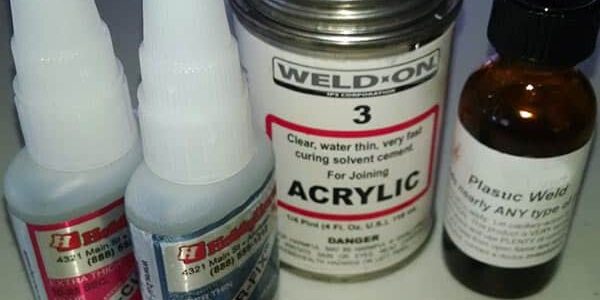Once upon a time … or as we say now … “back in the day,” when you purchased a model kit you also picked up a tube of model cement for the assembly process. If your parents were like mine they knew when you were scale model building instead of doing your homework. Model cement had a strong distinctive odor that permeated the air throughout the house. It was the mainstay product to stick those pieces and parts together, and it all too often bore our fingerprints if we weren’t careful with how we applied the cement.
Then in the ‘70s along came Cyanoacrylate … aka Super Glue or CA. It afforded instant setup which was fine as long as your fingers weren’t still connected to the parts you were gluing together. CA also made it easier to put on delicate parts without having to wait for the tube cement to cure.
Sometime in the ‘80s, someone discovered that plastic models could be welded together, not with a heat-producing device, but by melting the parts using a chemical reaction. Small quantities of such chemicals were present in the tube of modeling cement already, but it was found using them in raw form provided greater penetration and faster drying time, necessary to bond the parts together.
Overview: What’s the Difference?
What are the major differences between glue, cement, and solvents? Think of glue as a piece of chewing gum. If you want to stick something to something else … say a piece of paper to the front of a friend’s school locker, you’d take the gum you’ve been chewing and smash it between the piece of paper and the locker door. It stays put, right where you put it, and won’t fall off until someone removes it or time dries out the gum and it releases its bond.
Cement on the other hand is very similar to glue, but it has additional additives. These additives cause the compound to which it is applied to soften the materials being bonded. This gives the adhesive element something more to grab onto. Tube cement uses a chemical that melts the plastic surface slightly to gain a better grip. You still end up with two pieces held together with a chemical membrane. Another way to describe this is like how false teeth are held onto the gums in someone’s mouth. A liquid, powder, or paste is applied, and then the denture is inserted. The membrane formed by the adhesive is what holds the denture in place.
Solvents, on the other hand, don’t leave a residual chemical membrane to hold the pieces together. They rely on chemicals that cause the plastic to dissolve slightly, softening the pieces being melded together into one. Like welding metals, the strength comes from the penetration into the material surface. This results in the welded joint being as strong or even stronger than the surrounding material. Solvents vary in the amount of ‘heat’ or softening they produce. You want to use the appropriate solvent for the task at hand. Using too hot of a solvent on delicate parts can be disastrous, so you have to know the properties of the solvent you are using.
In the next installment I’ll share some tips to help you determine whether glue, cement, or solvent is best for your scale model building project, and also how Xuron® Dispensing Bottles help with the application of adhesives. Until then, Happy Modeling!

